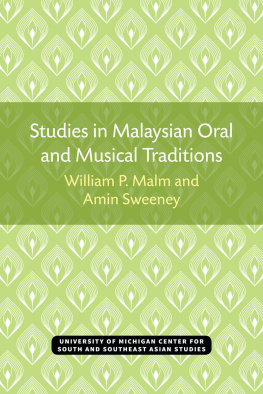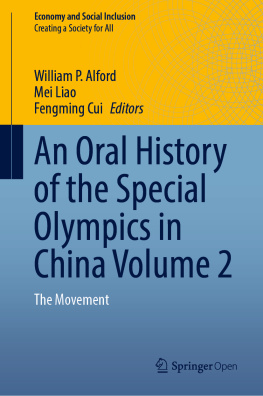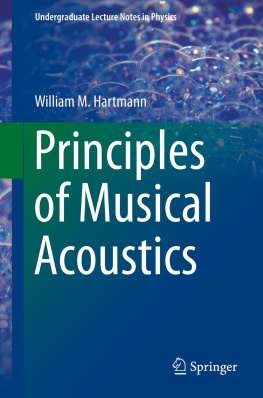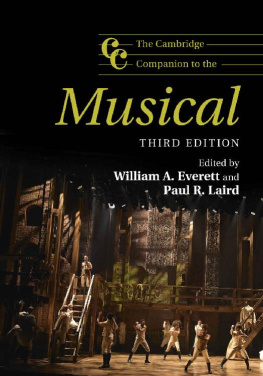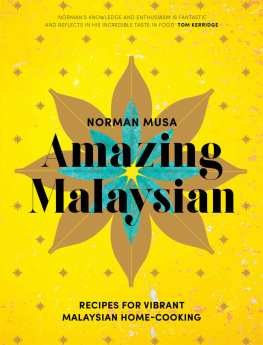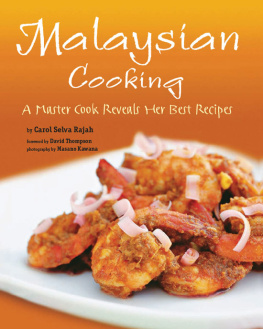William P. Malm - Studies in Malaysian Oral and Musical Traditions
Here you can read online William P. Malm - Studies in Malaysian Oral and Musical Traditions full text of the book (entire story) in english for free. Download pdf and epub, get meaning, cover and reviews about this ebook. year: 2020, publisher: University of Michigan Center for South and Southeast Asian Studies, genre: Children. Description of the work, (preface) as well as reviews are available. Best literature library LitArk.com created for fans of good reading and offers a wide selection of genres:
Romance novel
Science fiction
Adventure
Detective
Science
History
Home and family
Prose
Art
Politics
Computer
Non-fiction
Religion
Business
Children
Humor
Choose a favorite category and find really read worthwhile books. Enjoy immersion in the world of imagination, feel the emotions of the characters or learn something new for yourself, make an fascinating discovery.
- Book:Studies in Malaysian Oral and Musical Traditions
- Author:
- Publisher:University of Michigan Center for South and Southeast Asian Studies
- Genre:
- Year:2020
- Rating:4 / 5
- Favourites:Add to favourites
- Your mark:
- 80
- 1
- 2
- 3
- 4
- 5
Studies in Malaysian Oral and Musical Traditions: summary, description and annotation
We offer to read an annotation, description, summary or preface (depends on what the author of the book "Studies in Malaysian Oral and Musical Traditions" wrote himself). If you haven't found the necessary information about the book — write in the comments, we will try to find it.
Studies in Malaysian Oral and Musical Traditions — read online for free the complete book (whole text) full work
Below is the text of the book, divided by pages. System saving the place of the last page read, allows you to conveniently read the book "Studies in Malaysian Oral and Musical Traditions" online for free, without having to search again every time where you left off. Put a bookmark, and you can go to the page where you finished reading at any time.
Font size:
Interval:
Bookmark:

THE UNIVERSITY OF MICHIGAN
CENTER FOR SOUTH AND SOUTHEAST ASIAN STUDIES
MICHIGAN PAPERS ON SOUTH AND SOUTHEAST ASIA
Editorial Board
Alton L. Becker
John K. Musgrave
George B. Simmons
Thomas R. Trautmann, chm.
Ann Arbor, Michigan
STUDIES IN MALAYSIAN ORAL AND MUSICAL TRADITIONS
Music in Kelantan, Malaysia and Some of Its Cultural Implications
William P. Malm
* * * * *
Professional Malay Story-Telling: Some Questions of Style and Presentation
Amin Sweeney
Ann Arbor
Center for South and Southeast Asian Studies
The University of Michigan
1974
Michigan Papers on South and Southeast Asia, 8
Open access edition funded by the National Endowment for the Humanities/Andrew W. Mellon Foundation Humanities Open Book Program.
Library of Congress Catalog Card Number 74-83599
International Standard Book No. 0-88386-491-6
Copyright 1974
by
Center for South and Southeast Asian Studies
The University of Michigan
Printed in the United States of America
ISBN 978-0-88386-491-3 (paper)
ISBN 978-0-472-12828-0 (ebook)
ISBN 978-0-472-90228-6 (open access)
The text of this book is licensed under a Creative Commons Attribution-NonCommercial-NoDerivatives 4.0 International License: https://creativecommons.org/licenses/by-nc-nd/4.0/
CONTENTS
William P. Malm
Amin Sweeney
by
WILLIAM P. MALM
Kelantan is the northernmost province on the east coast of Malaysia. It is considered to be the most orthodox area in a nation whose state religion is Islam. At the same time it must be noted that it borders to the north with the Buddhist country of Thailand and to the west is the Malaysian province of Perak whose jungles and mountains contain many pagan tribal traditions. Beyond Perak is Kedah with its larger Indian and Chinese populations and to the south is Trengganu where some Indonesian traits are still to be found. English, Dutch, and Portuguese colonial periods in Malaysia have left their cultural souvenirs and modern versions of western fads are a natural part of Kelantans mass communication and economic world. Viewed from afar, Kelantan would seem to be a culturally surrounded citadel of Islam in continental Southeast Asia. It is partly in this context that our study of its music will be made. First, however, we must review briefly the musical-cultural history of Malaysia in general.
The population of Malaysia consists of indigenous, Chinese, and Indian peoples, each of whom maintains their special musical tastes. In some mountainous or jungle regions one finds tribes whose dream songs, bamboo instruments, jews harps, and stamping tubes are similar to types found in similar locations all over the Southeast Asian mainland and its islands. Large bronze drums found in Pahang show that the Indochina Bronze Age was known in Malaysia by at least the first century A. D. while trade with China and India seems to go back to the seventh century B.C. Artisans and tradesmen from both these countries, particularly China, were part of the Malayan scene throughout all historical records thereafter though the major increases in immigration occurred in the nineteenth century in the form of labor forces for the developing tin and then rubber industries. Both ethnic groups held to their earlier musical tastes so that today one can hear in Malaysia vintage Chinese operas and puppet dramas as well as Indian bangsawan musicals. Returning to earlier times one can note that the ancient coastal kingdoms of Malaysia reflected the economic and intellectual prestige of Hinduism. Malayan chiefs certainly must have been aware as well of the many other, larger Southeast Asian kingdoms in such places as Indonesia, Cambodia, and Thailand. The east coast of Malaysia seemed to be particularly connected with the Majapahit kingdom of Java in the mid-fourteenth century. Under this influence, many of the former Hindu kingdoms of Malaysia became Moslem sultanates. In the sixteenth century the Portuguese took over Malacca and the Dutch and English soon followed suit in trade and political influence. The intrepid Arab trader left his mark in Malaysia as is evident in the zapin village dance which is sung in Arabic in Malaysia to the accompaniment of the lud and other Near Eastern instruments. The British domination of the peninsula supported and controlled the various regional sultanates so that, even after Malaysian independence in 1957, the sultans of Kedah, Perak, Trengganu, Kelantan, and, now, the King of Malaysia were able to maintain slight remnants of Moslem court music. The musical marks of the colonial period and modern mass communications were mentioned earlier. With this brief background, let us turn now to Kelantan.
The tribal music to the west of Kelantan has little direct influence on the coastal and plains peoples though we should note the tradition of jungle dream songs and shamanism for reference later. The influences of Thailand to the south are more obvious and direct. For example, a Thai Lakon theatrical called Manora is found in Kelantan and, on the west coast, in Kedah (Brandon, 1967, 6162). The performers themselves are usually Thai and the language they use can be a mixture. The accompanying ensemble consists of two tacked-headed, stick-beaten barrel geduk drums, two single-headed gedombak pot drums, two small knobbed gongs set in a rack and/or wooden sticks which are clacked together plus a serunai, double reed aerophone. These instruments combine with actors to produce a type of theatrical available deep in the Buddhist world of continental Southeast Asia as far as Cambodia and Laos. At the same time one can note that the main actor is in the costume of a Manora bird, who is the major princess from a Hindu Sanskrit drama Divyavadana, which turned into the Buddhist Pali story Sudhana-jataka in Thailand. Traditionally the cast was all-male though today girls may be used. The serunai oboe and the earlier transvestite tradition of Manora might make some think of possible Islamic influence but the basic musical style, particularly the singing, is more typical of those musics heard elsewhere on the Southeast Asian mainland. Historically it would seem that Manora is an example of the confusion of trails that is part of any study in the cultural dynamics of Kelantanese arts.
Fight dances are popular throughout Southeast Asia, the Malaysian form ( bersilat) seeming to be closer to the Indonesian style than to Thai boxing. The accompanying ensemble consists of one gong, two drums, and a serunai oboe. As in almost all of Southeast Asia, the gong is knobbed. The drums ( gendang) are the equally common barrel drums with two lashed heads. A comparison of Kedah and Kelantanese performances, however, shows that performance practice is not always the same (Book Record [BR] item 1 & 2). The Kedah example is taken from a special videotape session in Kampong Padang Lumut, Kedah at a school of Javanese silat and Thai boxing. The teacher, who played the lead drum throughout the demonstration, said that his main teacher had come from Java. The Kelantanese example was recorded during one of the many public events going on at the sports grounds and stadium of Kota Bharu during the Sultans birthday festival in 1968. The Kedah drums were played by hands with interlocking patterns in a Mayong style to be discussed later. The Kelantanese drummers hit the right hand head with a stick more in the style of the South Indian tavil (Jairazbhoy, 1970, 381382). While a similar one-stick playing method can be found in Bali, the fact that the stick is curved outward seems significant since such an unusual beater has been found in the ancient Near East (Sachs, 1940, 249) while the sticks that curve inward towards the head are more common in parts of Africa (Ankermann, 1901, 61). Such single outward curving sticks are found in ancient India as well (Marcel-Dubois), 1941, Plate VIII) and can be seen on the thirteenth century bas reliefs of Angkor Wat in Cambodia (see the southern section of the west outer gallery). A general reader may find this detail picayune but it has been given to show how comparative musical organology (the science of music instrument studies) can often prove to be most useful in ones search for the relations between various musical cultures (Malm, 1967, 2223).
Font size:
Interval:
Bookmark:
Similar books «Studies in Malaysian Oral and Musical Traditions»
Look at similar books to Studies in Malaysian Oral and Musical Traditions. We have selected literature similar in name and meaning in the hope of providing readers with more options to find new, interesting, not yet read works.
Discussion, reviews of the book Studies in Malaysian Oral and Musical Traditions and just readers' own opinions. Leave your comments, write what you think about the work, its meaning or the main characters. Specify what exactly you liked and what you didn't like, and why you think so.

